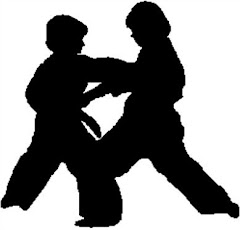The Secret Of The Fighting Arts
The fighting arts began as a means to hide combative applications from kings and other rulers, who restricted the use of fighting arts to keep peasants from fighting back or rebelling. As a result, the peasants developed the fighting arts that did not look like they were fighting.
By doing this, they could still practice combat without looking like they were training for protection. Many of the practices used a prearranged kumite that involved two men in an instance of choreographed fighting.
The beginning lessons in karate involve several combative applications that might seem like a waste of time to unskilled karate students. Learning how to stand properly, as well as throwing and blocking a blow, are some of the essentials that beginning students must learn.
They are also taught how to focus by using a variety of breathing techniques. These might seem unimportant initially, but these lessons provide a solid foundation for a much better understanding of the fighting arts.
One of the first things a white belt learns is the kata. Unlike prearranged kumite, a kata is designed for a single person to practice against an invisible opponent. Each level of the fighting arts has a different kata.
The basics of that particular rank are put into the form for the student to practice. The very first kata a student learns might be nothing more than how to move in a basic stance and coordinate punches and blocks in different directions. The complexity increases in direct proportion to the rank.
For the first few months, the new student becomes accustomed to these very basic combative applications. As the student nears his first test, he is introduced to the prearranged kumite. Prearranged kumite takes the techniques learned in the kata and helps the student learn what it feels like to actually block or throw a punch.
Prearranged kumite is all about contact: it's like sparring with a script. This combative application in its most simplistic form teaches a student how to move with another person in a fundamental set of movements -- with general targets such as the head, chest and lower abdomen.
The student moves in with a strike to the head and his partner is required to block it. Step by step, they move through the head/chest/down sequence: first one way, then acting as the attacker. Students will practice this until they can move quickly and with good form.
The other part of prearranged kumite, in the fighting arts of karate, is the bunkai. For this, the kata itself is transformed into a two person routine. Unlike the prearranged kumite, where a set of three identical moves are repeated between partners, the bunkai incorporates all the twists and turns, strikes, blocks, stances and take downs (in the higher levels) of the kata for that rank.
When the bunkai is mastered, both students should be able to move at top speed without pulling any punches or kicks, like actors in a fight onscreen.
Later down the road, once all of the basic combative applications have been mastered and the student has achieved the rank of brown or black belt, there is still one more step. At this point, the student of the fighting arts is taught the hidden applications behind the basic prearranged kumite.
He finds that an open hand block isn't just a block, but can be used to grab an opponent as well; or what might have looked like a strike, is actually a cleverly disguised take-down. The black belt is only the beginning -- the learning never stops.


No comments:
Post a Comment